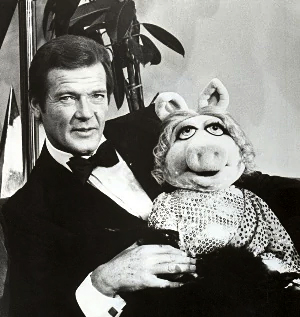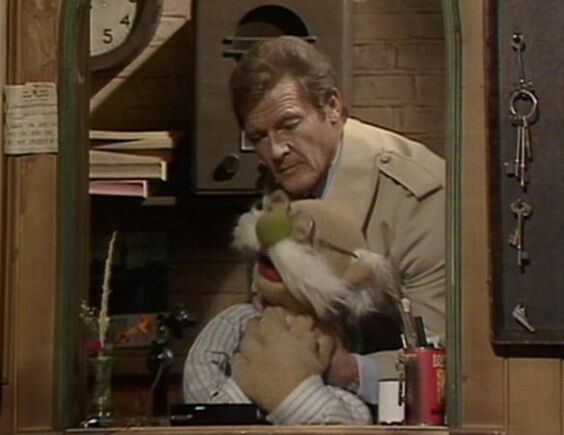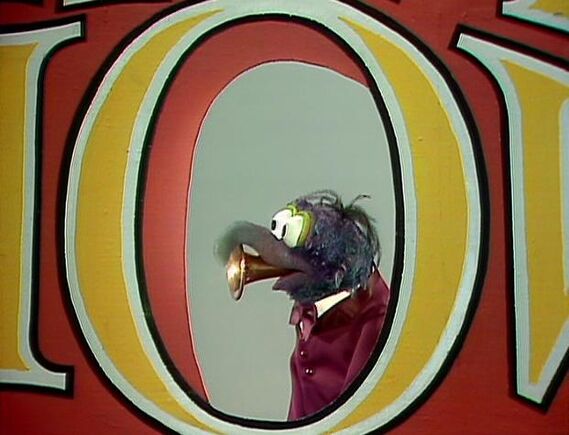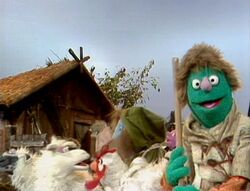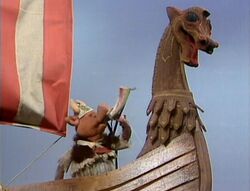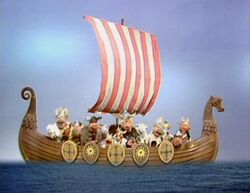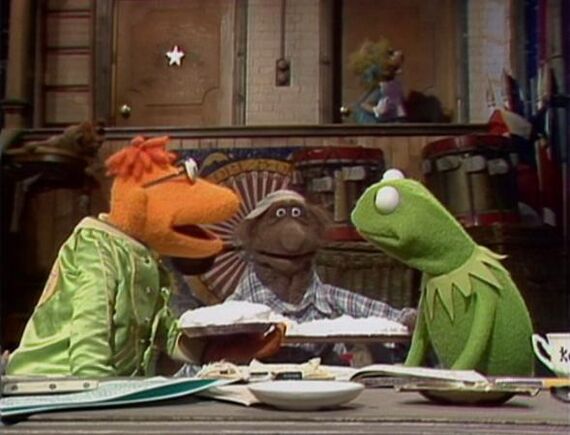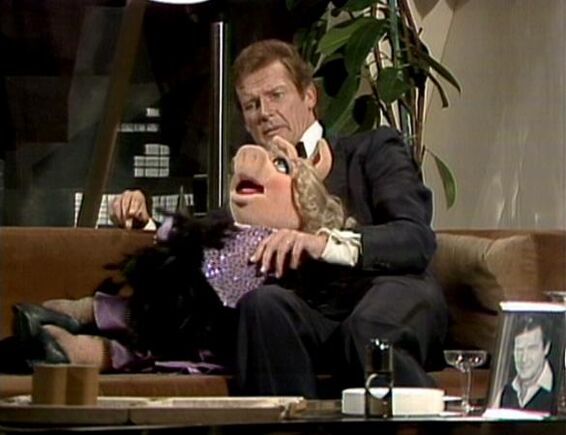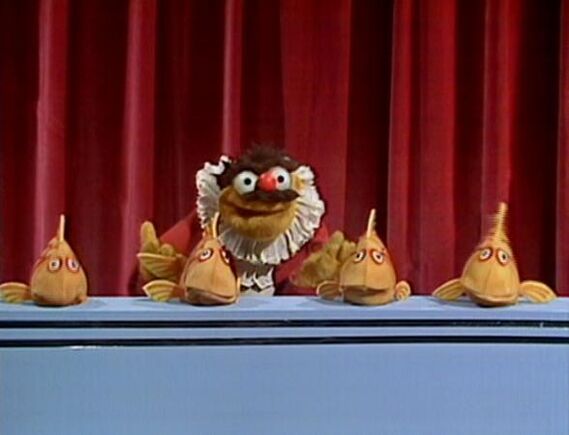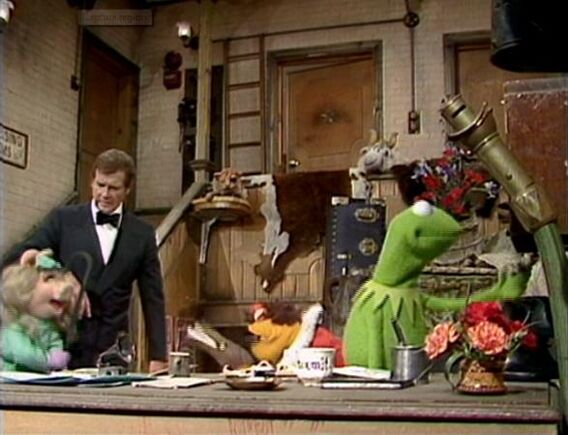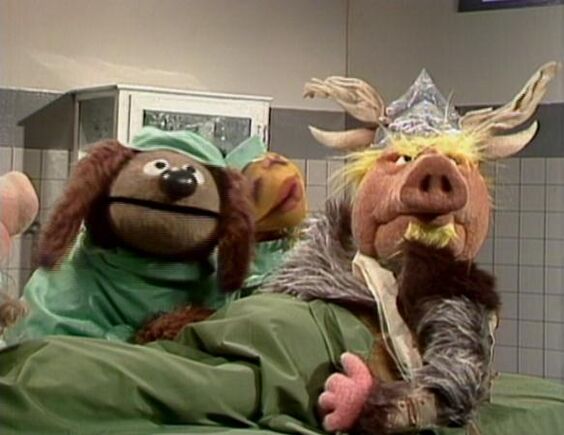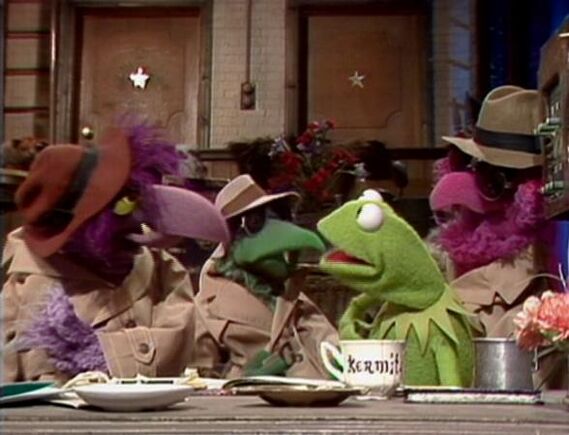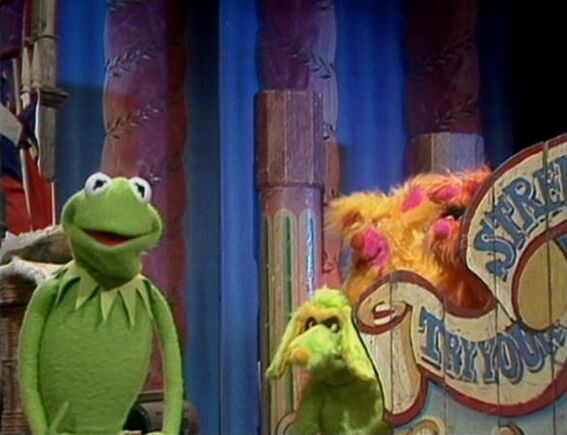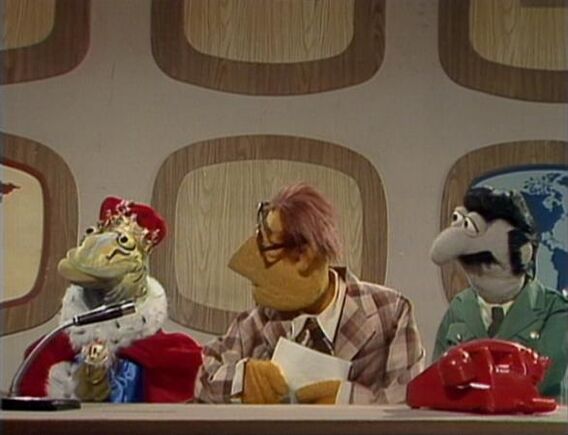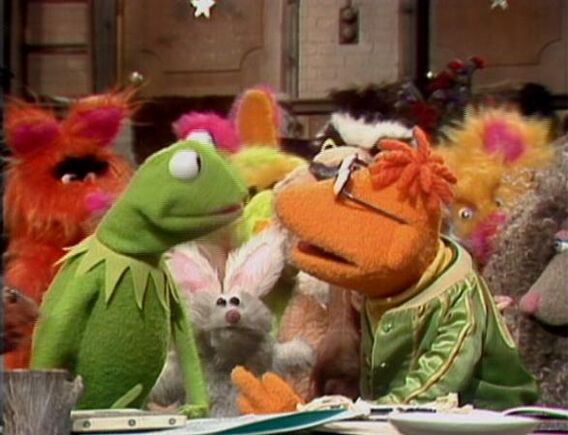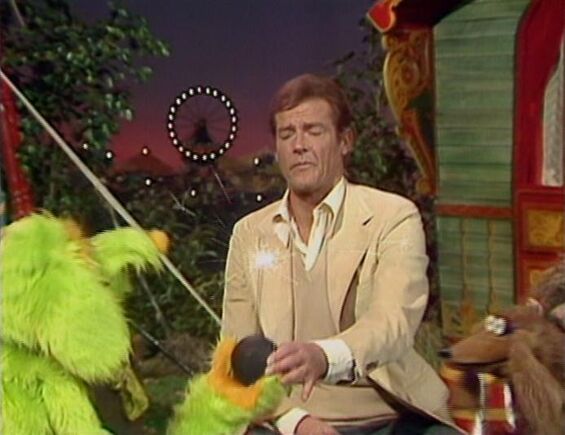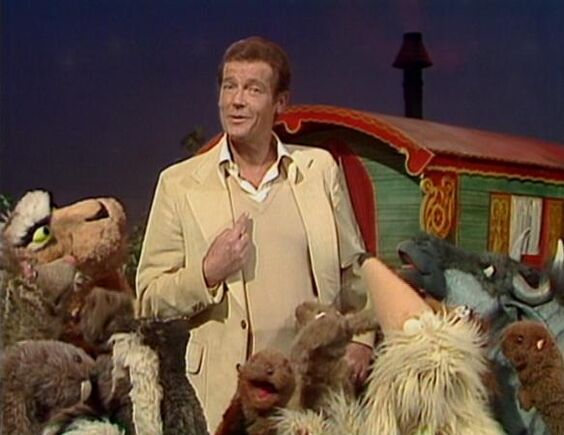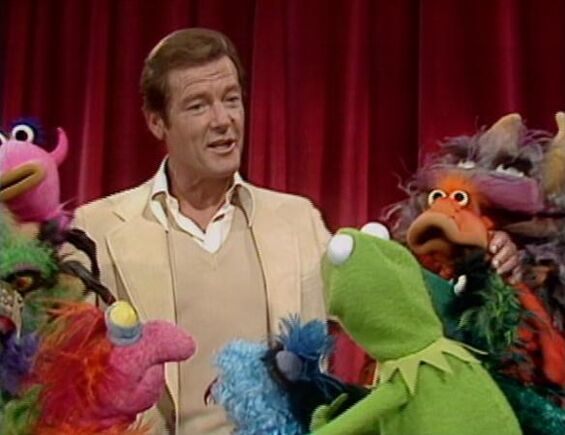 They called him the ice man, but there was so much more to Björn Borg than cool detachment and a wispy beard. Thirty Two years after the Swede's last and greatest Wimbledon triumph and with Wimbledon just around the corner,I offer a remarkable portrait of the rebellious teenager who became an accidental Nordic mystic - and an all-time great.
They called him the ice man, but there was so much more to Björn Borg than cool detachment and a wispy beard. Thirty Two years after the Swede's last and greatest Wimbledon triumph and with Wimbledon just around the corner,I offer a remarkable portrait of the rebellious teenager who became an accidental Nordic mystic - and an all-time great.Björn's greatest victory was not the way he came to master his ground strokes, but the change he underwent, with terrible determination, to tame his passionate spirit.' Lennart Bergelin, Borg's coach
Was ever a great champion so misunderstood, even in the broad light of his glory, as Björn Borg? By the time of the Wimbledon championships of 1980, when he was 24, he had won the grass-court competition each of the four preceding years, as well as the French Open, on clay, five times. On contrasting surfaces that required radically different approaches, this was an achievement without precedent. And yet the calm young master was widely regarded as an automaton, a robot. The Swede had is i magen: ice in his stomach. In the British press he was the 'Iceberg'. His admirers no less than his critics described a man with cold blood running through his veins.

How wrong they were. Borg was not blessed with abundant talent, but the talent he had he surrendered to, with the devotion of an instinctive faith, until he achieved liberation. Borg was an inspiration and I wondered how others could not see that his heart was filled with joy for this game and that he hid this joy not to deny it, but rather to nurture its presence within him.
Born on 6 June 1956, Borg was brought up in Södertälje, an industrial town of 100,000 people 30 minutes drive south-west of Stockholm, the only child of Margarethe and Rune, a clothes-shop assistant. He first appeared at Wimbledon in 1972, winning the junior title, a lanky Swedish youth with a straggle of blond brown hair. He had blue eyes that were so close together they appeared slightly crossed. He kept them averted from other people, betraying the shy evasion of a teenager who believes everyone is looking at him - the one object he focused on was a tennis ball when about to hit it. He had a sharp nose in a thin, feral face, with a long pointed chin; his wide shoulders were stooped and he walked with a rolling gait. And yet everywhere he went he was pursued by mobs of schoolgirls. Less a Viking, really, than an Arthurian knight, Borg was embraced by England. We were drawn to his modesty.
Out wide at the back of the court, Borg hits a top-spin forehand and scuttles back to the middle, to a spot a couple of feet behind the baseline. He gets his balance. As his opponent makes to strike the ball, Borg jumps three inches off the ground. The balls of both rubber-soled feet make contact with Wimbledon's Centre Court at the same moment as his opponent's racket, 20 metres away, makes contact with the white ball: Borg springs, launching himself as soon as it is physically possible to do so in the right direction to make his next shot.
This minor detail is something his more observant young admirers will emulate on the tennis courts of clubs and public parks, this return to optimum position for every shot of every point; the little jump to land on the soles of one's feet at the precise moment; the blast off. The shaggy-haired youth of Seventies England will play endless rallies, through long hot afternoons and on, into the twilight of summer evenings, thinking only of their feet. Of the return to the centre. Of the jump in readiness to explode right or left or forward.
Occasionally, after a while, they may realise they're hitting the ball without thinking about it. And then those scrawny boys and gasping girls, with their warped rackets and scuffed shoes, they know for a moment what it is to numb yourself. To be both there, playing shots as good as you can play, and here, watching your feet scamper across, come back, hit the ground, jump.
'I'm two people,' Borg would one day tell John McEnroe. He was divided - the one hitting and the one watching the hitter - as are we all. The difference was that Borg had found, on a tennis court, both apprehension of this duality and, in play, its paradoxical resolution.
Before Borg, tennis was a straightforward affair. Two chaps strode on to court and bashed the ball at each other in a sporting duel of athleticism and accuracy. It was an amateur approach that had been little changed by the advent of professionalism in the 1960s: players shared the same fundamental style and what separated them came down to the odd degree of intelligence, skill, consistency. It was the same style seen at all levels of the sport, around the world. Rod Laver, the finest player of his era, didn't play a different game from an average club player; he just played it with exquisite feel for the ball on the racket.
In 1974, Jimmy Connors, a strutting young braggart who used his racket like a cudgel, bludgeoned his way to the final of Wimbledon. Ken Rosewall, an Australian gentleman of graceful accomplishment, was bullied off the court in three humiliating sets. In 1975, a repeat was expected, only for Connors to find his power neutralised by the intelligence of fellow American Arthur Ashe, who sliced and chopped and dollied his returns with such audacious unpredictability that Connors, in his rage, blasted them into the net or out of court.
Borg, meanwhile, was rising fast. He had already won the French Open twice when he came to Wimbledon in 1976, aged 20. He scorched through the fortnight without dropping a set. It was the hottest summer of the 20th century - the final was played in 41°C - and the baked turf, giving the ball a higher, truer bounce, helped the young baseliner. In the final he met the gifted trickster Ilie Nastase. After a nervous beginning, when he went three games to love down, Borg found his range. He chased down every drop shot and passed Nastase with ease. At one point, Borg was at the net and the frustrated Nastase, sensing his last chance of the championship being tugged away from him, belted the ball straight at his opponent. Borg barely flinched as it flew past his ear, and out; he stared at Nastase, who had turned towards the baseline before he registered what Borg was doing and so then conducted a comical doubletake, to turn back to face him again.

'What the bloody hell you looking at?' Nastase growled. Borg carried on gazing at Nastase for another second or so, long enough to communicate: 'You hit that ball at me. You know you did and I do not take kindly to it.' Then Borg turned and walked back to his baseline. He'd made his point, in a small but telling display, not of machismo but of a quiet, contained manliness. He thumped Nastase in straight sets, 6-4 6-2 9- 7. He was Wimbledon champion.
What was so very hard, what would take us a long time to understand, was that the drama of his performance was not merely in the shots he made, the points we saw played. It was going on somewhere deeper as well. There was a big clue, or a series of small clues, right there in front of us. He was always fidgeting with something. Adjusting one of his sweatbands, maybe, or fingering the gold chain around his neck, a birthday present from his girlfriend, Romanian tennis player Mariana Simionescu. At the end of each point he checked his racket and, if necessary, plucked at the strings, returning the grid of gut to a fussy perfection. Before a serve he compared two spruce balls and relegated the apparently inferior one to his pocket.
Borg fretted over small things to keep his mind off the big things. He kicked the back of his shoes against his racket, to knock off chalk or soil. He checked the white tape on his hands. While his opponent prepared to serve, he blew on his fingers. Borg seemed to be seeking, like a Method actor, the reality of the moment. The match, the championship, is not real. What's real is the sheen of sweat in the palm of my hand, this hair I need to tuck into my headband, this plaster on my blistered finger.
It looked as if he was trying to distract himself and in a sense he was. This was concentration in action, sport as yoga, what the Hindu sage Patanjali defined as 'control of the fluctuations of the mindstuff '.
In footage of Borg coming off court, you can see he's not really there, basking in the applause; he's preoccupied by something else. Never had an audience seemed less necessary for a great sportsman
Borg's style was both utilitarian and exotic. He favoured long rallies from the back of the court, though the shots he manufactured there looked all askew. It's hard now to remember how unnatural his style appeared. For the forehand he withdrew the racket high behind him and brought → his arm down and then up to the ball in a wide cartwheeling whirl of top spin, following through so far that the racket flew beyond his left ear. The backhand was a copy, except it was two-handed, which may have provided extra power but limited his reach: any opponent's serve or shot in open play that swung the ball wide to Borg's backhand sent him catastrophically far beyond the tramlines to get his racket around it.
One's first impression was that young Bjorn simply hadn't played enough. Like an unpractised dancer, he expended an absurd amount of energy on every shot: observers, including twice Wimbledon champion John Newcombe, regretted that the young Swede's wrists and shoulders would be worn out within a couple of years.
A little further observation, however, confirmed the opposite: Borg had played too much. He had spent far too many hours hitting a ball at a garage wall with those same two shots, an autistic metronome. The boy had got into bad habits and now he couldn't get out of them.
This supposition turned out to be correct: Borg's father was a fine ping-pong player whose prize for winning one competition had been an adult tennis racket, which he gave to his nine-year-old son. Björn began playing tennis as if it was ping-pong on a bigger table, using his wrist to whip the ball back, but he did so with a racket that was far too heavy for him, which he had to hold with both hands. Everyone advised him to let go of what could only be a severe handicap, but the young Borg was stubborn: he drilled himself repetitively, his shots the whispered mantras of a novice monk, purifying his game to the point where the rehearsed and the natural melded into one.
As for the volley, which is where the true touch of talent expresses itself, Borg approached the net as if it gave him vertigo. 'Coming to the net is like being at the frontier,' his coach, Lennart Bergelin, would say. 'You're fighting the unknown.'
Bergelin was a stern, brooding figure, his craggy features masking the torment of the coach, who is impotent to do anything out there where it matters. They met when, at the age of 15, Björn joined Sweden's Davis Cup team. Bergelin was captain and he oversaw the last flickerings of defiance from the bad boy of Swedish tennis.
'I was a real nutcase,' Borg has said. 'I swore, threw my racket around and cheated.' Eventually he was suspended for six months by Sweden's tennis authorities, banned even from practising at his club. For Borg it was 'a devastating experience'. It was at this point, however, that he determined to control his mind and emotion on a tennis court, as no one had before.
'I used to call him the Martian,' Ilie Nastase once said, 'because whenever he came off court, if you were in the locker room, you could never tell whether he'd won or lost. He'd come in, peel off those tight Fila outfits he wore, fold them into a neat pile, and shuffle off to the showers.'
Borg had an abnormally slow pulse rate. He could doze in airports or locker rooms and had the great gift for an athlete of being able to sink into dreamless restoration in a strange hotel bed on the night before a big match. 'He needs to sleep nine or 10 hours,' Mariana said, 'not necessarily because he is physically tired. His nervous cells need charging.'
Borg kept his weight during a tournament at 73 kilos: a hectogram up or down and he'd feel either bloated or weak. He was a Gemini, the sign of the twins, and a superstitious one. During Wimbledon fortnight he stayed in the same suite in the same Hampstead hotel each year, was driven across London on the same route, practised on the same court for two hours each morning. He neither shaved nor indulged in sex as long as he kept winning. By the final he had a wispy beard and his small blue eyes seemed to have moved even closer together in their concentration, so intently had he been watching the ball.
'That meditator becomes eternally free,' according to the Bhagavad Gita, 'who is able to withdraw from external phenomena by fixing his gaze within the mid-spot of the eyebrows; and to control his sensory mind and his intellect; to free himself from desire, fear and anger.'
By the time Borg was 20 he needed no more coaching, but Lennart Bergelin accompanied him to all the major tournaments: he made travel arrangements, planned meals, organised practice schedules and partners, put Björn to bed and woke him up in the morning. He also took care of the rackets.
Until the development of synthetic heads in the 1980s, rackets were the same instruments that had been used for more than 100 years: a wooden handle and oval head, strung with gut or nylon. Borg liked his rackets strung at 80lb pressure, which was incredibly tight, almost impossible to achieve without breaking a string or twisting the wooden frame. At such pressure, the rackets were extremely vulnerable: one year Borg broke strings on 60 rackets during the French Open.
There was only one stringer in the world Borg trusted, a fellow Swede called Mats Laftman. Even though one or two other technicians could string Borg's rackets to the right pressure, they always felt, and sounded, odd to him. So he and Bergelin had to plan their transatlantic flights with stopovers in Copenhagen, where they'd pick up and drop off batches of rackets for express delivery to or from Stockholm.
Guardianship of these high-strung rackets became one of Bergelin's most important services for his charge. He hoarded them in his hotel room. At night, while Björn slept in peace, Lennart would be woken by a high-pitched popping noise: a string had snapped. Bergelin would get out of bed and sort through the entire batch of rackets until he found the one on which a string had pinged, then he would cut .out the rest of the strings, so that the frame didn't warp. Then he would return to bed.
The first week of Wimbledon, with the grass green, lush and fast, was more precarious for Borg than the second, when the surface became worn and hard. He was almost tripped up by Mark Edmondson in 1977, Victor Amaya in '78, Vijay Amritraj in '79, but clung on to sneak through in five sets, then carried on to win the title.
Borg won almost every five-set match he played, partly because he was a superb athlete, with both speed and stamina, and partly because he won the crucial points. 'He thrashed me 6-0 6-1,' a bewildered Billy Martin once complained, 'but I had game point in nine games.'
It wasn't that Borg raised his game for the big points; it was more that he refused to acknowledge that they were significant. He applied Kipling's advice to treat the twin imposters of triumph and disaster the same - reproduced on a large sign at the players' entrance to Wimbledon's Centre Court - not just to the results of matches, but to every single moment within a match: what for his opponent was a nerve-shredding point, Borg played like any other.
And then, whatever had happened in a point, Borg left it behind: I like to think he disciplined himself to dismiss as vanity the voice in one's head that excoriates oneself for errors made, opportunities missed. Spiritual paths within Buddhism seek to overcome, according to Namkhai Norbu, 'the problem that has arisen as the individual enters into dualism, developing a subjective self, or ego, that experiences a world out there as other, continually trying to manipulate that world in order to gain satisfaction and security.'
Of the surfaces on which tennis is played - clay, hard court, carpet, synthetic - grass suits above all the serve-and-volley game. A player's aim in every rally is to hit the ball deep into one of his opponent's corners and rush in to claim the net. From there the point is his. His desperate opponent returns a weak shot or a lob, either of which he puts away with careless bravado. Borg turned this guiding principle on its head. He made the baseline his fortress and sucked his opponents towards the net. That was where he wanted them, so that he could pass them at will. It looked as if, unable to stop themselves, they were being drawn ineluctably forward: striking a good approach shot hard and deep to the furthest corner of Borg's backhand court, they followed in, and were lost.

Gradually, as Borg won one Wimbledon title after another, familiarity with his unique style - that of a nine-year-old pingpong player given a man's heavy tennis racket - bred disdain. Even some of his fellow players managed to use the ineptitude of his volleying to explain his success on grass. 'The surface looks after his volleys and makes them better than they are,' John McEnroe would say. 'Balls that he hits short or mishits - flub volleys - are great volleys on grass,' said Vitas Gerulaitis.
Detractors claimed that Borg's game was hobbled by caution. 'My passing shots often look spectacular,' he said himself, unapologetically, 'but there's a huge safety factor built into them.' The ferocious topspin he used achieved depth while keeping a much wider margin for error than a flat stroke. It seemed that no one else had worked out the odds before. 'But my percentages have more to do with my mind than my strokes,' he pointed out. 'I try to make my challenger believe he can't outsteady me. My cold attitude on court helps. I never applaud or acknowledge an opponent's good shot. I just go about the business of the next point. This, in a sense, is saying, "I don't care how spectacular one shot is, you'll have to hit two thousand to beat me".'
The champion had no interest in hitting fine winners. All he wanted was 'to hit one more ball in court than my rival hits'. Each victory justified his approach, but it seemed disillusioning to those who saw sport as being about more than winning.
In 1979 he met Roscoe Tanner in the final. Tanner was a big-hitter with a tightly curled mop of sun-bleached hair. Borg withstood his one, extraordinary weapon, a serve of minimal backlift and formidable speed. At 5-4 in the fifth set, 40-0 up on his own serve, for the first time in front of us, Borg faltered. His knees trembled, his racket arm started shaking, revealing in his weakness a glimpse of his passion. He lost power and control, netting one nervous volley, being passed off another, as Tanner came back to deuce. But then Tanner fell apart and Borg squeezed two more points for victory: his fourth title in a row, overtaking Fred Perry's prewar hat-trick.
If Borg hypothesised a new approach to tennis, rehearsed and concentrated to the point of detachment, his antithesis arrived on cue. In 1977, the year of the Queen's Jubilee, Borg won his second Wimbledon, Virginia Wade won the women's title, and a wised-up kid from Queens, New York, made it through the qualifiers and reached the semi-finals. John McEnroe was a child savant of the tennis court. He had incredible touch and eye, feathering the ball one moment, punching it away the next. He found angles that didn't seem to have existed before, his performances intuitive interrogations of the laws of geometry.
In contrast to Borg, McEnroe embodied an amateur ethos. He preferred playing doubles to the metronomic tedium of the practice court. He was able to acknowledge shots that beat him, with an audible 'Yup!'. His game was an improvisation. His one, gross drawback was that at any provocation, real or imagined, he was apt to have a tantrum, behaviour he justified by claiming that he put himself off more than his opponents. What was astonishing was that, at Wimbledon anyway, none of them ever walked off court. Not that Borg would have reason to. 'I never acted like a jerk against him,' McEnroe would admit. 'I had too much respect.'

It is a commonplace that sport is war without violence. It is also art with competition. Ilie Nastase tells the story of when his friend Jimmy Connors played in the 1991 US Open, aged 39. He was losing badly to his young fellow American Aaron Krickstein on a hot and humid day, but dug in, fought back and prevailed, in five exhausting sets. 'After the match,' Nastase says, 'Jimmy was dead. He went on a drip on the massage table, with doctors swarming around. I asked him , "Are you crazy? What's wrong with you, you've won this tournament five times. Now you're old, you want to die on the court?"
'He looked at me and said, "Nastase, you understand nothing. You're European, you're a bullshitter like all Europeans. For me, the five wins don't count. It's the last one that counts. This one. I'm still here ".'
How players respond to pressure determines the standard they reach even more than their talent. Borg and McEnroe responded in different ways. McEnroe, cursed with inexplicable skill that obliged him to grapple with equally powerful egos in front of thousands of spectators, externalised the pressure he felt, to a histrionic degree. He was a character from one of John Cassavetes's emotional movies, a mess of a human being, his rants a way to authenticity. 'I believe in the validity of a person's inner desires,' Cassavetes said. 'And those inner desires, whether ugly or beautiful, are pertinent to each of us and are probably the only things worth a damn.'
The Swede, on the other hand, was like one of the actors, or 'human models', in Robert Bresson's austere, spiritual films: 'The thing that matters is not what they show me but what they hide from me and, above all, what they do not suspect is in them ... It is the flattest and dullest parts that have in the end the most life.' To McEnroe's complexity, Borg offered depth.
Borg and McEnroe had such perfectly contrasting styles of play and of character that, as they progressed towards their inevitable meeting at Wimbledon, in the 1980 final, fans were divided in their preference. It was easy to imagine that this was in some way a moral choice. That it came down to whether one felt McEnroe was rebelling against the establishment - so eagerly represented by English tennis - or merely bullying a flustered fellow in a blazer from middle England. It's a pleasant incongruity that McEnroe has since become a fully blazered member of that establishment himself, while Borg remains aloof. He has revisited Wimbledon only once since his retirement, for the millennial Parade of Champions.
Just as this opponent who acted out all his inner conflict enabled us to see what was hidden in Borg's game of supplicatory patience, so Borg needed the challenge of a player who was both his equal and his opposite - McEnroe being a gambler with finesse and spontaneity - to define his place at the summit.
The 1980 Wimbledon Men's Final
The 1980 Wimbledon men's final went in waves. McEnroe walked onto Centre Court with that disgruntled slouch of his, then began with exemplary shots, as if resuming some interrupted display of his prodigious gifts. Borg, by contrast, was playing stiffly, like a man with flu, his muscles not just tight but aching. McEnroe broke Borg and held for 3-0, Borg then scraped a service game, but McEnroe broke again and served out the first set, 6-1.
McEnroe gave the usual impression that he had a grudge against a few people in the crowd, he wasn't yet sure which ones, but he was playing serve-and-volley tennis of the highest calibre. His service action was absurd: he leaned forward from the waist until his torso was parallel to the ground. Or maybe he was just hiding behind the net, ready to pop up and surprise his opponent with sliced balls that swung way out of Borg's reach.
The second set continued like the first. Borg kept saving one break point after another and hanging on to his own serve by his fingertips, to inch ahead, only for McEnroe to draw level with imperious play. Borg was unable to sustain a rally of more than three shots, to work himself into a rhythm. If they were pugilists, the bout might have been stopped in that set..
Then, at 6-5, Borg broke McEnroe and the set was his. Owing to the caprice of tennis's scoring system, McEnroe had dominated the first two sets, yet by letting slip a couple of points at the vital moment found the match tied at one set all. Downcast, he began the third set with his lower lip quivering and spent the rest of it twitching with bewildered resentment. Borg took that one 6-3.
Borg was now improving calmly game by game, his serve harder, ground strokes accurate, his volleying competent. The final was, however, a match of poor quality. At no time during the first four sets did either player flourish at the same time. It was hugely inferior to the semi-final Borg had played against his friend and practice partner Vitas Gerulaitis in 1977, five sets of superlative tennis.
By the fourth set McEnroe had recovered himself, only to find Borg now beyond his reach. There's a particular exhilaration in sport that occurs when great athletes cast off the burden of hope and expectation on their shoulders, and perform freely, in time for glory. One thinks of Cathy Freeman opening up to win the 400 metres on home ground at the Sydney Olympics of 2000; of Ronaldo finding redemption from the wilderness in the 2002 World Cup. So it was with Björn Borg in that fourth set: he played with uninhibited ease. At 4-4 he broke McEnroe. Serving for the championship at 5-4, he reached 40-15.
McEnroe was one shot from defeat. He might have been expected to curse and pout his way to the exit. Instead he simply, without apparent decision or effort, began abruptly to hit thrilling winners. Within moments a match that seemed to have been over was six games all in the fourth set..
The tie break that followed has lifted the 1980 final into myth. At this time and place, with every other point from 5-5 either a championship point to Borg or a set point to McEnroe, the two men exchanged shots of courage and beauty, until they were not so much competing as collaborating. Each had met his destiny in the other.
That tiebreak went on for almost 25 minutes. Eventually, at 18-16, it was over, and the winner was McEnroe. He had tied the match at two sets all. To have had seven championship points and not won a single one of them, and to find himself in a fifth, exhausting set, should have been a mortal blow for Borg. McEnroe, on the other hand, could barely restrain himself from crowing. He knew that Wimbledon was his: the king was dying. The great champion's reign was almost over. It was as inevitable as it was poignant.
'And then there follows,' as Tim Adams has written in On Being John McEnroe, 'a moment which must rank among the greatest in sport. It is the moment when Borg walks out to serve once more, two sets all, one set to play, as if nothing had happened.'
Instead of cracking, Borg simply played as he always played. That is, he refused to acknowledge what had gone before: his concentration focused until he saw only one thing, the ball that he was about to hit. A mirror image of the second set - though the quality of play was immeasurably higher - in the fifth Borg won his serve with regal authority, while McEnroe clung to his. He saved seven break points in all. But Borg was playing peerlessly. He had moved beyond a place where his opponent could find him. He won the final set 8-6.
'The final capacity of self-liberation,' wrote Namkhai Norbu, 'is called Randrol, which means "Of itself it liberates itself ". The separation of subject and object collapses, and one's habitual vision, the limited cage, the trap of ego, opens out into a spacious vision of what is. One enters the dance and play of energies, without limit.'
Two weeks after the final, on 24 July 1980, Borg and Simionescu were married in Bucharest. He was tennis's King of Kings and his reign would soon be over. He was 24 years old and he was burning out, from too many air flights, meaningless exhibition matches, injuries, drugs taken for injuries. The following year he lost the 1981 Wimbledon final, to McEnroe, who would say: 'When we shook hands, Björn looked oddly relieved.'
Borg couldn't quite comprehend what was happening. 'I didn't have that sparkling feeling,' he said.
Later that year, after the final of the US Open, which he also lost to McEnroe, Borg picked up his bag and walked off court before the awards ceremony took place and out of the stadium, straight to a waiting car, which drove him to the airport in his tennis gear. Soon afterwards he announced his retirement from tennis. His great challenger, curiously, would never quite attain the greatness his talent promised: the reason, McEnroe lamented, was that he remained 'in a kind of continued mourning for Borg'.
'Freed from self,' wrote the 14th-century mystic Meister Eckhart, 'you are self self-possessed. And as you are self-possessed you possess God and all creation.'
'It should be joy,' Borg has said, explaining his retirement. 'It should be in the heart.'
If it is given to certain athletes to move between normal consciousness and a state of grace, then what do they do, what can they hope for, once their bodies let them down from Olympian heights? The saint may be ready to dissolve his body into the essence of the elements and enter the Body of Light. It's not so easy for the accidental mystic.
Some, perhaps, are destined to follow the path of an Augustine or Siddhartha, of dissolution before enlightenment, but in reverse. From his tax haven in Monaco Borg embraced the life of an international playboy, mingling with the jet set and selling himself to ad campaigns. His marriage broke down when he fell for a 17-year-old girl, Jannike Björling, with whom he had a son, Robin. They would split amid accusations against him of cocaine addiction, against her of serial infidelity. A second marriage to an Italian singer 10 years his senior soon floundered. His company, Björn Borg Design Group, fell apart and he was forced to sell his Swedish home, speedboat and three life-insurance policies to pay off millions of dollars in tax and business debt.
Sporting comebacks have never been a good idea. 'It would be unique to have a successful one,' sports historian Bert Sugar has said. 'But great athletes think they are immortal; they don't know when enough is enough.'
In 1991, at the age of 34, Borg returned to tennis, in the Monte Carlo Open. He stepped into the curious spotlight wearing the same tight outfit of his heyday, wielding one of his old wooden Donnay rackets, as if nothing had changed in tennis in the past decade. It fell to a little known Spaniard, Jordi Arrese, wielding a graphite racket, to send the great champion scrabbling all over the court, chasing after missiles he was powerless to return. Soundly beaten in a succession of first-round ties over the next two years, Borg once more withdrew.
Perhaps he needed that jolt of reality. Borg, reclusive now, began to spend ever more time in Sweden. Married for a third time in 2002 to Swede Patricia Oestfeldt, he became a father again as well as stepfather to her two other children. They live in Stockholm where, still playing tennis himself for an hour a day, Borg now also coaches talented young players. Though no one knows for sure what goes on deep in the heart of any man, today Björn Borg appears at ease with himself; a mortal, reconciled finally to our divided existence.
